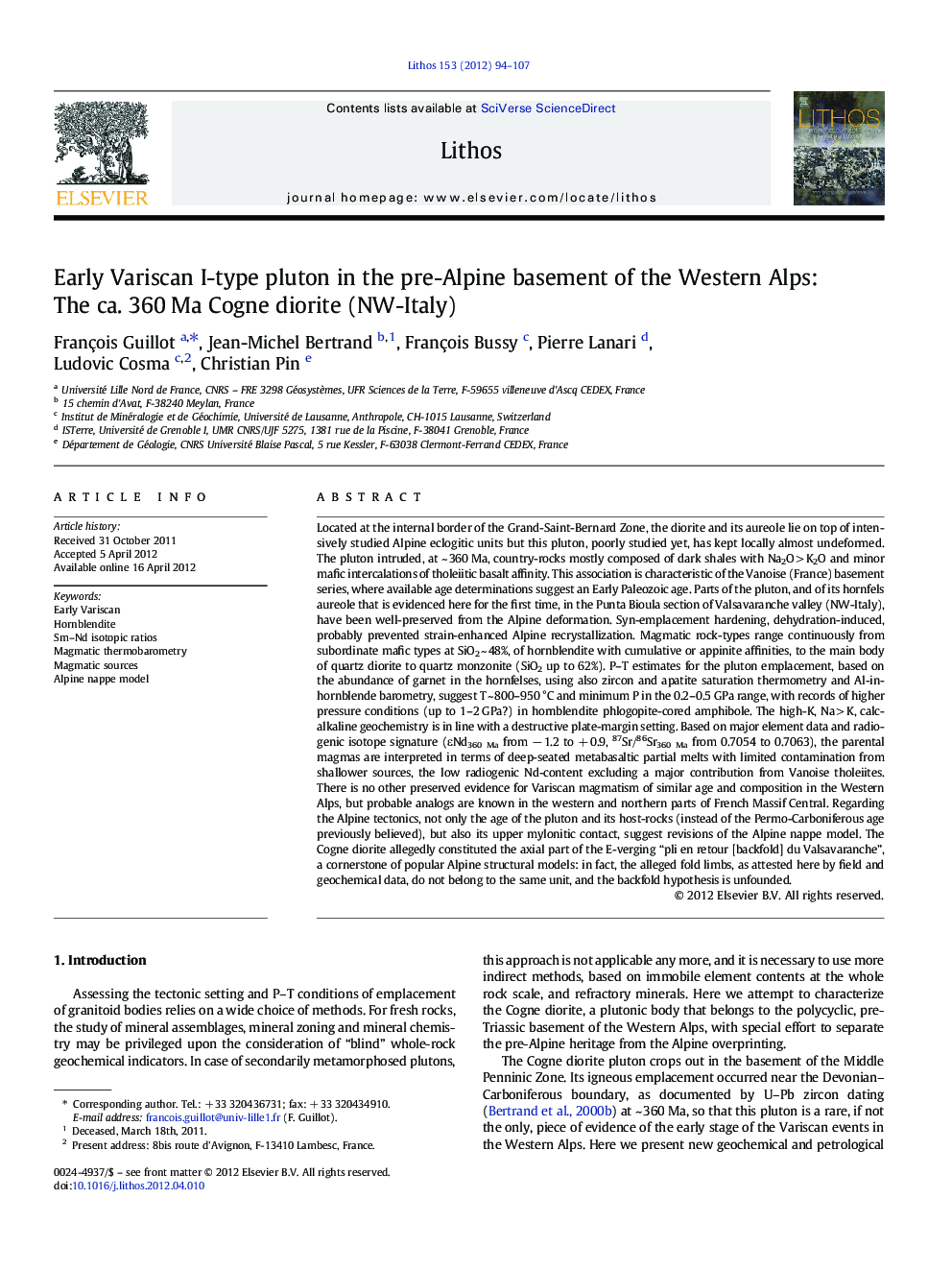| Article ID | Journal | Published Year | Pages | File Type |
|---|---|---|---|---|
| 4716431 | Lithos | 2012 | 14 Pages |
Located at the internal border of the Grand-Saint-Bernard Zone, the diorite and its aureole lie on top of intensively studied Alpine eclogitic units but this pluton, poorly studied yet, has kept locally almost undeformed. The pluton intruded, at ~ 360 Ma, country-rocks mostly composed of dark shales with Na2O > K2O and minor mafic intercalations of tholeiitic basalt affinity. This association is characteristic of the Vanoise (France) basement series, where available age determinations suggest an Early Paleozoic age. Parts of the pluton, and of its hornfels aureole that is evidenced here for the first time, in the Punta Bioula section of Valsavaranche valley (NW-Italy), have been well-preserved from the Alpine deformation. Syn-emplacement hardening, dehydration-induced, probably prevented strain-enhanced Alpine recrystallization. Magmatic rock-types range continuously from subordinate mafic types at SiO2 ~ 48%, of hornblendite with cumulative or appinite affinities, to the main body of quartz diorite to quartz monzonite (SiO2 up to 62%). P–T estimates for the pluton emplacement, based on the abundance of garnet in the hornfelses, using also zircon and apatite saturation thermometry and Al-in-hornblende barometry, suggest T ~ 800–950 °C and minimum P in the 0.2–0.5 GPa range, with records of higher pressure conditions (up to 1–2 GPa?) in hornblendite phlogopite-cored amphibole. The high-K, Na > K, calc-alkaline geochemistry is in line with a destructive plate-margin setting. Based on major element data and radiogenic isotope signature (εNd360 Ma from − 1.2 to + 0.9, 87Sr/86Sr360 Ma from 0.7054 to 0.7063), the parental magmas are interpreted in terms of deep-seated metabasaltic partial melts with limited contamination from shallower sources, the low radiogenic Nd-content excluding a major contribution from Vanoise tholeiites. There is no other preserved evidence for Variscan magmatism of similar age and composition in the Western Alps, but probable analogs are known in the western and northern parts of French Massif Central. Regarding the Alpine tectonics, not only the age of the pluton and its host-rocks (instead of the Permo-Carboniferous age previously believed), but also its upper mylonitic contact, suggest revisions of the Alpine nappe model. The Cogne diorite allegedly constituted the axial part of the E-verging “pli en retour [backfold] du Valsavaranche”, a cornerstone of popular Alpine structural models: in fact, the alleged fold limbs, as attested here by field and geochemical data, do not belong to the same unit, and the backfold hypothesis is unfounded.
► A unique Early Variscan pluton in the Alps, I-type, at 360 Ma ► Emplacement P and T estimated around 0.35 GPa and 950 °C ► Maybe emplaced over subducting oceanic crust, from Rheic Ocean or Paleotethys ► Remains of deep source-rocks in cored amphibole of hornblendite ► This pluton is not the hinge of the Valsavaranche Backfold, now to be redrawn.
